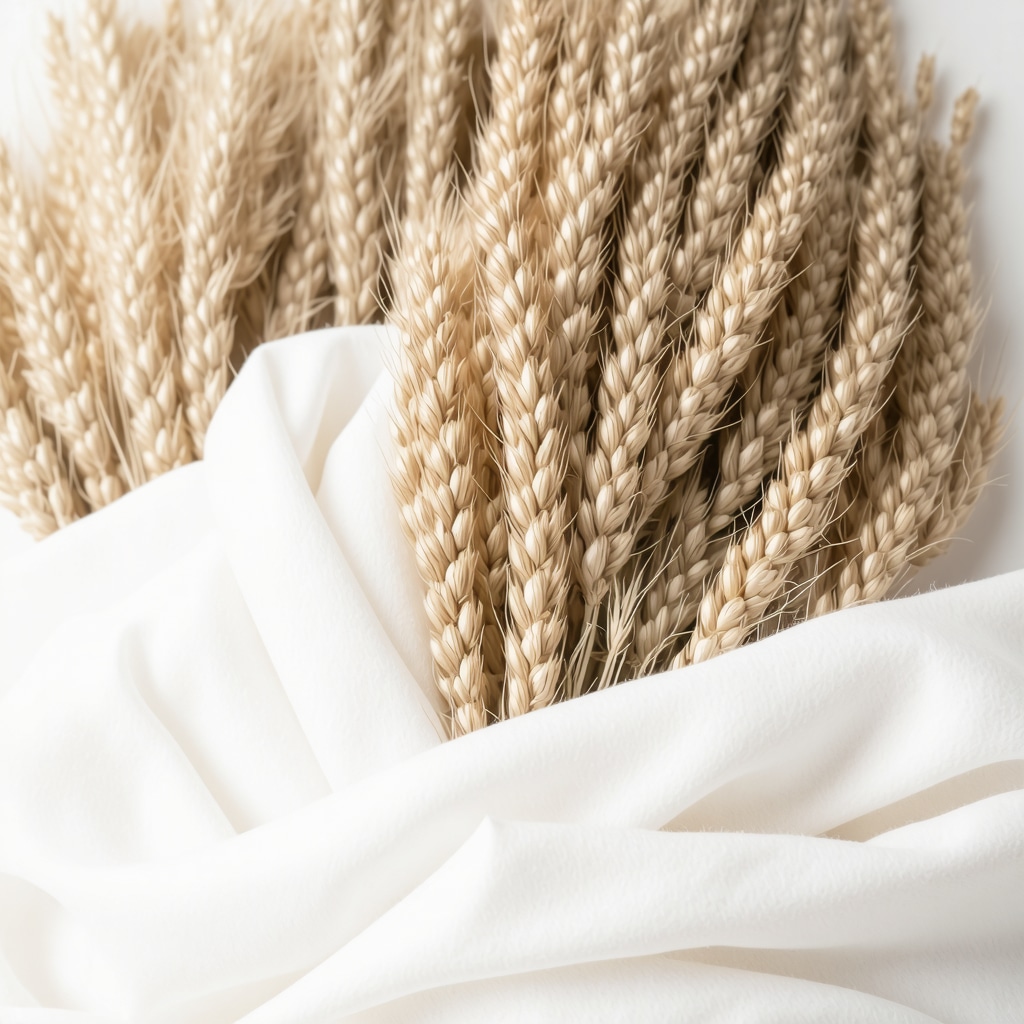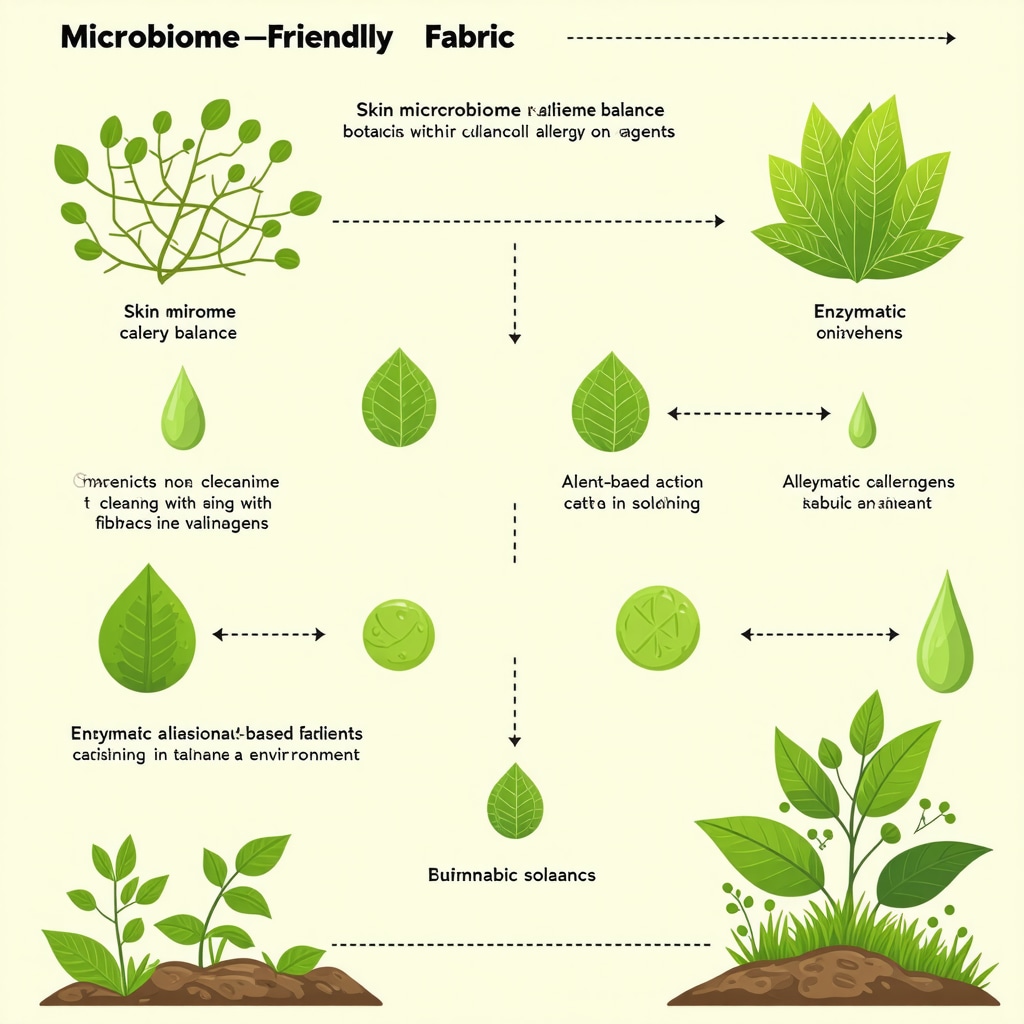Integrating Plant-Based and Chemical-Free Approaches in Allergy Management
Within the evolving landscape of allergy treatment, the shift towards plant-based and chemical-free solutions represents a paradigm grounded in both environmental sustainability and patient safety. These methodologies harness the therapeutic potential of natural compounds, minimizing exposure to synthetic chemicals that often exacerbate hypersensitive immune responses. Leveraging botanical extracts and non-toxic practices aligns with emerging research emphasizing the reduction of allergenicity and systemic inflammation without compromising efficacy.
Complex Mechanisms Underpinning Botanical Allergy Relief Agents
Plant-derived substances such as quercetin, stinging nettle (Urtica dioica), and butterbur (Petasites hybridus) have demonstrated potent antihistaminic and anti-inflammatory properties. Their molecular interactions with mast cells and cytokine pathways reduce histamine release, thus attenuating common allergic symptoms like rhinitis, conjunctivitis, and dermal irritation. The biochemical profiles of these phytochemicals suggest a multi-targeted approach, contrasting with single-action synthetic antihistamines, which may account for their favorable safety profiles and reduced side effects.
How Do Plant-Based Solutions Compare to Conventional Allergy Medications in Clinical Efficacy?
Comparative clinical trials reveal that while plant-based therapies may not universally replace pharmacologic agents for severe allergic reactions, they offer substantial relief for mild to moderate symptoms and serve as effective adjunctive treatments. For instance, a randomized controlled trial published in Phytotherapy Research demonstrated that butterbur extract significantly reduced nasal symptoms with efficacy comparable to cetirizine but without drowsiness. However, variability in botanical preparations and patient-specific factors necessitate individualized, evidence-based integration into allergy management plans.
Non-Chemical Environmental Control Strategies to Complement Plant-Based Therapies
Allergen avoidance and environmental modifications are critical complements to chemical-free interventions. Utilizing hypoallergenic textile care, such as hypoallergenic dry cleaning solutions that employ plant-based solvents, reduces residual irritants on clothing and bedding, thereby mitigating contact allergens. Additionally, maintaining indoor air quality through natural air purifiers and non-toxic cleaning agents further diminishes airborne allergens without introducing volatile organic compounds (VOCs) associated with traditional cleaners.
Exploring the Intersection of Allergy Relief and Sustainable Fabric Care
Sustainable garment care practices using plant-based solvents not only protect sensitive skin but also contribute to environmental health. Services like plant-based dry cleaning exemplify this convergence, offering chemical-free fabric care that reduces toxic load in domestic settings. These innovations resonate with allergy sufferers seeking holistic lifestyle adjustments that encompass both medical and everyday environmental exposures.
Call to Action: Engage with Advanced Eco-Friendly Allergy and Fabric Care Solutions
Professionals and allergy-conscious individuals are encouraged to explore and contribute to the growing body of knowledge surrounding plant-based and chemical-free solutions for delicate fabrics, which play a pivotal role in allergy relief strategies. Sharing clinical experiences and sustainable practices can accelerate adoption of safer, more effective allergy management paradigms.
Innovative Synergies Between Botanical Remedies and Green Fabric Care
Recent advances highlight the synergistic potential of combining botanical allergy relief agents with eco-conscious fabric care. Integrating plant-based dry cleaning solutions with natural antihistaminic compounds amplifies patient outcomes by minimizing allergen exposure both biologically and environmentally. This holistic approach addresses allergy triggers at multiple levels—reducing histamine release internally while ensuring garments and surroundings are free from chemical irritants that could provoke hypersensitivity.
Emerging Technologies Enhancing Chemical-Free Allergy Interventions
Cutting-edge technologies in fabric care, such as enzymatic cleaning and bio-based solvents, are revolutionizing how allergens are neutralized without harsh chemicals. These innovations align with botanical therapies by preserving the integrity of delicate fibers and sensitive skin while effectively removing dust mites, pollen residues, and microbial contaminants known to exacerbate allergic conditions. For example, enzymatic cleaners derived from naturally occurring microbes specifically target allergenic proteins, offering a precision method that traditional solvents cannot match.
What Role Does Microbiome-Friendly Fabric Care Play in Allergy Prevention?
Understanding the interplay between skin and environmental microbiomes opens new frontiers in allergy prevention. Microbiome-friendly fabric care products aim to preserve beneficial microbial communities on clothing and skin, which can modulate immune responses and reduce hypersensitivity. Unlike traditional antimicrobial treatments that indiscriminately eradicate microbes, these eco-friendly approaches foster a balanced microbial ecosystem, potentially diminishing the incidence and severity of allergic reactions. This concept is gaining traction among allergists and dermatologists seeking integrative strategies that complement plant-based allergy remedies.
According to the National Institutes of Health, maintaining microbiome diversity on skin and fabrics may be critical in mitigating allergic diseases, underscoring the importance of selecting hypoallergenic and microbiome-preserving cleaning practices.
Practical Guidelines for Implementing Sustainable Allergy Relief at Home
To effectively incorporate these innovations, individuals should adopt a multi-tiered strategy: prioritize hypoallergenic and plant-based cleaning services such as hypoallergenic dry cleaning; use eco-friendly detergents free from synthetic fragrances and dyes; and maintain indoor environments with natural air purifiers and humidity control to reduce allergen proliferation. Selecting garments treated with sustainable and low-emission processes also minimizes chemical exposure, supporting long-term skin health and environmental stewardship.
Engage and Expand the Dialogue on Eco-Conscious Allergy and Fabric Care
The evolving intersection of allergy management and sustainable fabric care invites practitioners, researchers, and consumers alike to share insights and experiences. We encourage readers to comment below on their journeys with plant-based and chemical-free fabric care solutions and their impact on allergy symptoms. Sharing proven practices fosters a community dedicated to advancing safer, greener allergy relief paradigms that benefit both individual wellness and planetary health.
Harnessing Microbiome Science to Revolutionize Allergy Relief and Fabric Care
Emerging research underscores the intricate relationship between the human microbiome and allergic disease pathogenesis. The skin and environmental microbiomes serve as critical modulators of immune tolerance, influencing hypersensitivity reactions. Integrating microbiome-friendly approaches in fabric care not only preserves beneficial microbial communities but also creates a protective barrier against allergen sensitization.
Innovative fabric care formulations now include prebiotic and probiotic components designed to sustain microbial diversity on textiles, which can indirectly modulate skin immune responses. This nuanced approach transcends traditional antimicrobial strategies that indiscriminately eliminate microbes, often impairing immune education and increasing susceptibility to allergies.
How Can Microbiome-Targeted Fabric Care Products Be Optimized for Individuals with Complex Allergic Profiles?
To optimize microbiome-targeted fabric care for patients with multifaceted allergy presentations, personalized considerations must guide product selection and usage frequency. Factors such as the individual’s skin microbiota composition, environmental allergen load, and textile fiber types interact dynamically, demanding tailored regimens. Advanced diagnostics, including metagenomic sequencing, facilitate identification of dysbiotic patterns, enabling clinicians to recommend fabric care solutions that support microbiome restoration alongside botanical allergy interventions.
Moreover, incorporating enzymatic cleaning agents that selectively degrade allergenic proteins without disrupting microbial balance offers a promising adjunct. Such precision cleaning minimizes allergen reservoirs on clothing and bedding, crucial for individuals with severe or polysensitized allergic conditions.
Leveraging Enzymatic and Bio-Based Solvents for Precision Allergy Management in Textile Care
Enzymatic cleaners derived from microbial sources have demonstrated high specificity in degrading allergenic proteins such as dust mite feces and pollen residues. Unlike broad-spectrum chemical solvents, these bio-based agents maintain textile integrity and microbiome viability, thereby reducing secondary irritant exposure.
Furthermore, bio-based solvents extracted from renewable plant materials provide sustainable alternatives with reduced environmental toxicity and allergenic potential. Their integration into dry cleaning and laundering processes aligns with green chemistry principles, minimizing volatile organic compound (VOC) emissions and chemical residues that can exacerbate allergic inflammation.
Innovating Patient-Centered Allergy Protocols Through Multidisciplinary Collaboration
Implementing these advanced eco-conscious strategies necessitates collaborative efforts between allergists, dermatologists, microbiologists, and textile care experts. Multidisciplinary protocols can incorporate microbiome analysis, botanical supplement guidance, and customized fabric care regimens to holistically manage allergy symptoms and improve quality of life.
For instance, clinical pathways might include prescribing botanical antihistamines alongside recommending specific plant-based dry cleaning services and microbiome-friendly detergents, fostering synergy between internal and external allergen control measures. Such integrative frameworks represent the forefront of allergy management innovation.
What Are the Challenges and Future Directions in Integrating Microbiome Preservation with Sustainable Allergy Fabric Care?
Key challenges include standardizing microbiome-friendly fabric care product formulations, establishing robust clinical evidence through large-scale trials, and educating both clinicians and consumers on the nuanced benefits of these approaches. Future research must elucidate long-term impacts on skin and environmental microbiomes, as well as quantify reductions in allergic symptomatology attributable to combined botanical and microbiome-conscious interventions.
Developing regulatory frameworks and industry standards that incentivize eco-friendly and microbiome-preserving textile solutions will be pivotal in scaling adoption. Additionally, technological advancements in rapid microbiome diagnostics and personalized fabric care recommendations hold significant promise.
As this field evolves, staying informed through authoritative sources such as the National Institutes of Health and engaging with ongoing clinical studies will empower both practitioners and patients to embrace these transformative allergy management paradigms.
Invitation to Collaborate and Innovate in Sustainable Allergy and Fabric Care Practices
We invite healthcare professionals, researchers, and consumers to contribute insights, share clinical experiences, and participate in advancing the integration of plant-based, microbiome-conscious, and chemical-free fabric care solutions. Your engagement is vital in refining protocols that optimize allergy relief while prioritizing environmental stewardship.
Continue exploring our resources and join the conversation to pioneer holistic strategies that redefine allergy management for the modern era.

Decoding the Microbial Ecosystem: A New Frontier in Allergy and Textile Science
Recent advances in metagenomic analytics have illuminated the complexity of microbial communities residing on textiles and skin, revealing their instrumental role in modulating allergic inflammation. This emerging discipline, intersecting microbiology and textile technology, paves the way for fabric care products engineered to nurture beneficial microbes while suppressing allergenic triggers. Such precision bioformulations challenge conventional paradigms by emphasizing ecological balance rather than indiscriminate sterilization.
Synergistic Potential of Phytochemicals and Microbiome-Optimized Fabric Treatments
Integrating botanical antihistamines like quercetin with microbiome-friendly enzymatic fabric cleaners may potentiate allergy symptom relief by targeting both immunological and environmental facets of hypersensitivity. This layered approach facilitates a reduction in histamine-mediated pathways internally, while simultaneously mitigating allergenic reservoirs on clothing and bedding. Commercial formulations that combine prebiotic fibers with plant-based solvents exemplify this innovative synergy.
How Can Personalized Microbiome Profiling Transform Fabric Care Recommendations for Allergy Patients?
Personalized microbiome profiling, leveraging next-generation sequencing technologies, offers unprecedented granularity in understanding individual microbial imbalances contributing to allergic phenotypes. By characterizing a patient’s unique skin and textile microbiota, practitioners can tailor fabric care regimens that support microbial diversity and resilience. This customization may include selecting specific probiotic-infused detergents or enzymatic cleaners optimized for the patient’s allergen sensitivities and textile preferences, thereby enhancing therapeutic outcomes.
According to a review by the National Institutes of Health, maintaining microbiome homeostasis is critical for immune modulation and may reduce allergic disease incidence, highlighting the clinical relevance of this approach.
Next-Generation Bio-Based Solvents: Balancing Textile Integrity and Allergen Removal
Emerging bio-based solvents derived from lignocellulosic biomass and microbial fermentation pathways are redefining sustainable fabric cleaning. These solvents exhibit selective solvency that preserves delicate fiber structures while effectively disrupting allergenic protein bonds. Their biodegradable nature and low VOC emissions position them as superior alternatives to petrochemical solvents, aligning with circular economy principles and reducing environmental allergen burdens.
Collaborative Frameworks for Integrative Allergy Management
Multidisciplinary collaboration between immunologists, textile chemists, and environmental scientists is paramount to advancing evidence-based protocols that integrate botanical therapies with eco-conscious fabric care. Development of clinical guidelines incorporating microbiome assessments and sustainable textile maintenance will facilitate personalized allergy management strategies, optimizing patient adherence and quality of life.
What Are the Emerging Challenges in Scaling Microbiome-Conscious Fabric Care Innovations Globally?
Scaling these innovations faces hurdles including variability in regulatory standards, limited consumer awareness, and the need for robust longitudinal clinical data validating efficacy and safety. Additionally, manufacturing scalability of bio-based solvents and probiotic fabric treatments must address cost-effectiveness without compromising ecological and therapeutic benefits. Collaborative consortia and public-private partnerships are essential to overcoming these barriers and fostering widespread adoption.
Keeping abreast of authoritative sources like the National Institutes of Health and engaging with emerging clinical trials will empower stakeholders to navigate these complexities effectively.
Call to Action: Pioneer Holistic Allergy Solutions Through Research and Practice
We invite clinicians, researchers, and sustainability advocates to deepen the dialogue on integrating microbiome-friendly fabric care with botanical allergy treatments. Collaborate in developing standardized protocols, share clinical insights, and contribute to advancing this transformative nexus of allergy management and environmental stewardship. Together, we can innovate patient-centered solutions that harmonize human health with ecological sustainability.

Expert Insights & Advanced Considerations
Synergizing Botanical Agents with Microbiome-Optimized Fabric Care
Combining the antihistaminic properties of phytochemicals such as quercetin and butterbur with microbiome-friendly fabric treatments represents a sophisticated dual strategy in allergy management. This integration not only targets internal immunological pathways but also reduces external allergenic reservoirs on textiles, forming a comprehensive approach to symptom alleviation and environmental control.
Precision Enzymatic Cleaning: A Paradigm Shift in Allergen Neutralization
Enzymatic fabric cleaners derived from microbial sources offer unparalleled specificity in degrading allergenic proteins like dust mite residues without compromising textile integrity or beneficial microbiota. This precision reduces unintended chemical exposure and supports preservation of skin and environmental microbiomes, which are crucial for immune tolerance.
Personalized Microbiome Profiling as a Guide for Fabric Care Protocols
Advancements in metagenomic sequencing enable tailored fabric care regimens that align with an individual’s unique skin and textile microbiota composition. This personalization enhances therapeutic outcomes by fostering microbial diversity and resilience, thereby diminishing hypersensitivity and improving patient quality of life.
Environmental Sustainability Meets Allergy Relief in Fabric Care Innovations
Bio-based solvents and plant-derived cleaning agents not only mitigate allergic triggers but also contribute significantly to reducing volatile organic compound emissions and environmental toxicity. The adoption of such green chemistry principles is essential for advancing sustainable allergy management that respects both human health and ecological balance.
Multidisciplinary Collaboration as the Cornerstone for Next-Generation Allergy Protocols
Integrating expertise from immunology, microbiology, dermatology, and textile science is vital to develop evidence-based, patient-centered protocols. Such collaboration fosters innovation in combining botanical therapies with eco-conscious fabric care, ensuring holistic and effective allergy solutions.
Curated Expert Resources
Phytotherapy Research Journal: Offers rigorously peer-reviewed clinical trials and mechanistic studies on plant-based antihistamines and anti-inflammatory compounds relevant to allergy relief.
National Institutes of Health (NIH) Microbiome Program: Provides comprehensive research and reviews on the human skin and environmental microbiomes’ roles in immune modulation and allergic disease pathogenesis.
Green Chemistry & Engineering Journal: Explores innovative bio-based solvents and sustainable fabric care technologies aligning with eco-friendly allergy management goals.
Journal of Allergy and Clinical Immunology: Features multidisciplinary studies integrating immunological insights with environmental and textile science for advanced allergy treatment paradigms.
International Textile and Apparel Association (ITAA): Delivers cutting-edge research on textile treatments, microbiome-friendly fabric care products, and sustainable garment maintenance strategies.
Final Expert Perspective
In synthesizing the forefront of allergy relief and sustainable fabric care, it becomes clear that plant-based and chemical-free solutions are no longer isolated alternatives but integral components of a holistic allergy management framework. By embracing microbiome-conscious protocols, enzymatic precision cleaning, and bio-based solvents, professionals and consumers can markedly improve allergic symptom control while advancing environmental stewardship. The evolving nexus of botanical therapies and green fabric care heralds a transformative era for allergy sufferers seeking safe, effective, and sustainable solutions.
For those committed to pioneering this integrative approach, engaging with trusted resources such as the plant-based dry cleaning solutions and exploring eco-conscious fabric care options at non-toxic dry cleaners will provide a practical foundation. We invite readers to contribute their expert insights and experiences through our contact page, fostering a collaborative network dedicated to advancing safer, greener allergy relief strategies.

